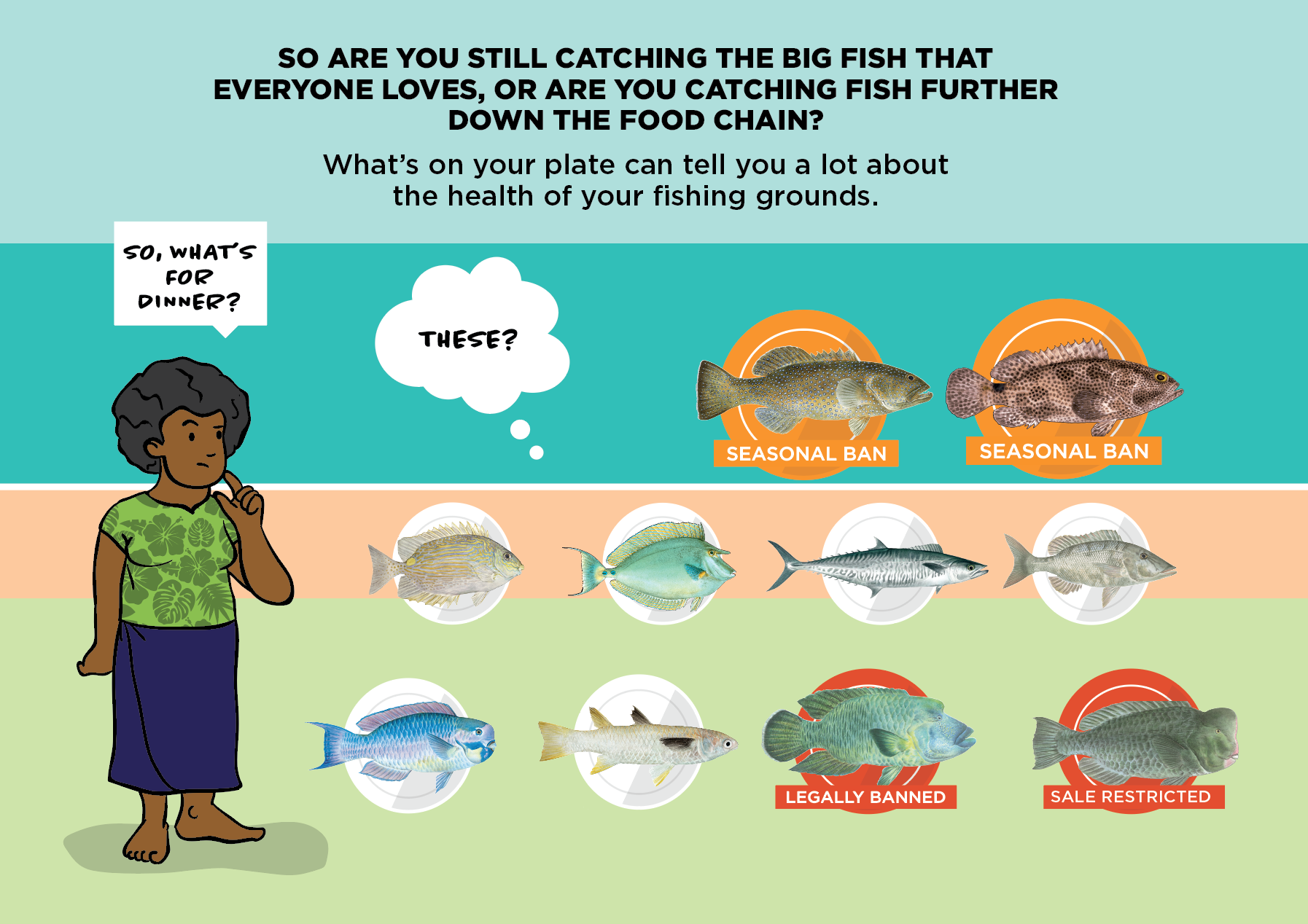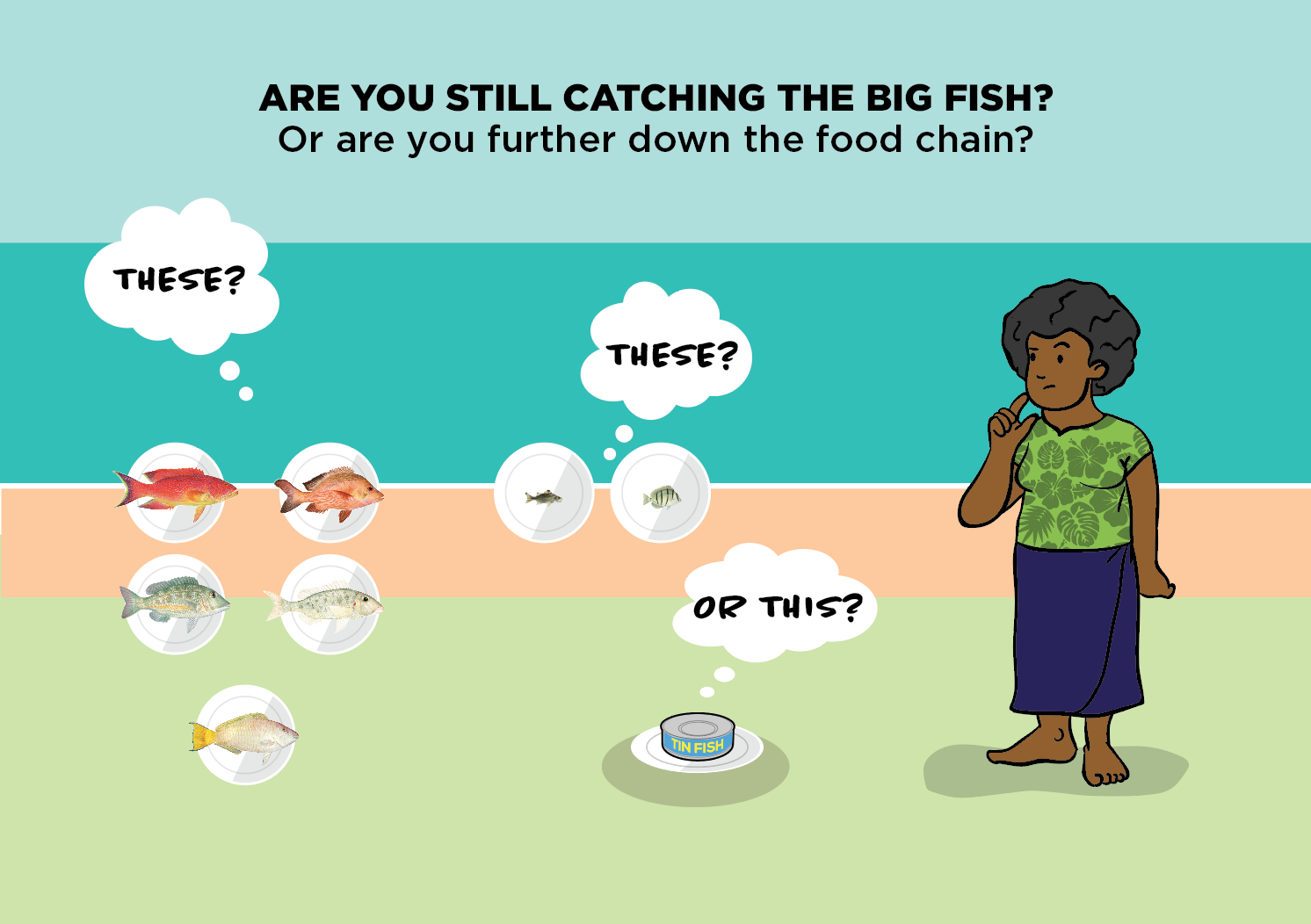So what’s for dinner?
What you’re eating for dinner might tell a lot about the health of your fishing ground?
Most of the time when we talk about overfishing, we talk about fish catches, the fish taking longer to catch, going further to catch them, and fish getting smaller.
But when overfishing happens, it’s often more complicated. Typically, you lose one fish at a time, with the fish at the top of the food chain, disappearing first. Fisheries scientists call this serial depletion.
Fish illustration reproduced with the permission of the Pacific Community (SPC) and cChange.
So what’s the story in your village?
Normally, you find the closer to the urban areas, and fish markets, the further down the food chain you are. If we can collect enough stories, we can create a map of fish health in Fiji.
That’s why when we asked Laisiasa Mocevakaca, a member of the Yaubula committee from Navuniivi Village in Ra, what’s for dinner, his answer was a little concerning.
“Qio bulubulu,” Laisiasa says. That’s mud shark, in English, and Laisiasa said in years past, they would never eat it. But fishing is different now.
“We are hardly seeing fish like ta, donu, kawakawa and ika loa,” he said. “We are now eating fish that we never used to eat before like qio bulubulu!” he exclaims.
Follow us on facebook.com/4fjmovement and get access to the 4FJ Fish Smart tools here. Get Smart to Fish Smart!





